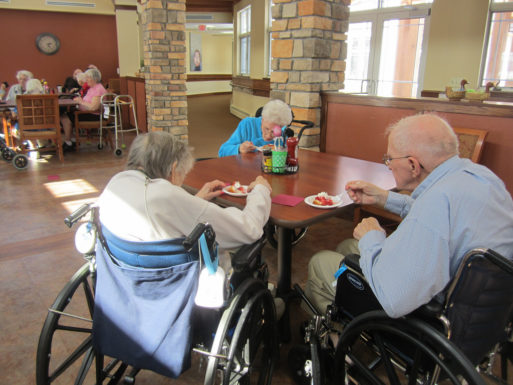
Credit: Flickr.com
For years now, the Five Star Quality Ratings system has helped patients and their families compare nursing homes to find the best fit. This year, that rating system has expanded to include five more quality measures, giving patients an even clearer picture of which nursing homes offer the highest level of care.
The Centers for Medicare and Medicaid Services came up with the system to ensure that nursing home patients received the best care. The center rates every nursing home on a 1 to 5 scale, with 5 being the highest score. It also hires health inspectors to rate each nursing home on the list and verify that they’re compliant with quality standards.
In August 2016, CMS expanded its official rating system to include five more quality measures in an effort to make the list more accurate. These include:
Number of Short-Stay Residents Who Return to the Hospital
The percentage of patients who return to the hospital after staying in the nursing facility now helps to determine the facility’s overall score. If this percentage is high, the facility will receive a lower score.
Number of Patients Who Experienced Improved Locomotion
If a nursing facility has a high number of patients who experience an improvement in their physical mobility, the facility receives a higher rating.
Number of Patients Whose Locomotion Worsened
Nursing homes with a high number of patients who experienced worsened physical ability receive lower overall ratings. This quality measures how well the nursing facility encourages patients to move independently.
Number of Patients Who Have Outpatient Emergency Room Visits
A high number of ER visits will lower the nursing home’s rating.
Number of Patients Who Were Successfully Discharged
If the patient successfully leaves the nursing facility and doesn’t come back for at least 30 days, the nursing home receives a higher score.
As CMS notes, this list of quality measures is still incomplete. Officials continue to find new methods for rating nursing homes, and this list will likely expand over the next few years.

Credit: Wikimedia.org
In addition, these numbers don’t always give patients and their families an accurate sense of which facility is right for them. For example, a nursing home might get a higher number of high-risk patients than other similar facilities. As a result, its hospital re-admission percentages may increase due to no fault of its own.
It’s also possible that a nursing home with a lower score is still the best fit for certain patients. A relatively healthy patient might choose a 3-star-rated facility that’s closer to relatives rather than the 5-star-rated facility 30 miles away. The best nursing home depends on a number of factors that CMS currently doesn’t cover in its guidelines.
Still, as CMS continues to expand the list, it will remain an essential tool for patients who aren’t sure which nursing home is best for them. The 5-star-rating is an excellent place to start because it allows patients to narrow their search down to facilities that other medical professionals trust. Patients and their families will still need to consider their individual needs.

 New Quality Measures for Nursing Homes Give Patients Better Information
New Quality Measures for Nursing Homes Give Patients Better Information



 The Spiritual Symbolism of Cardinals
The Spiritual Symbolism of Cardinals
 Meaning-Focused Grief Therapy: Imaginal Dialogues with the Deceased
Meaning-Focused Grief Therapy: Imaginal Dialogues with the Deceased














